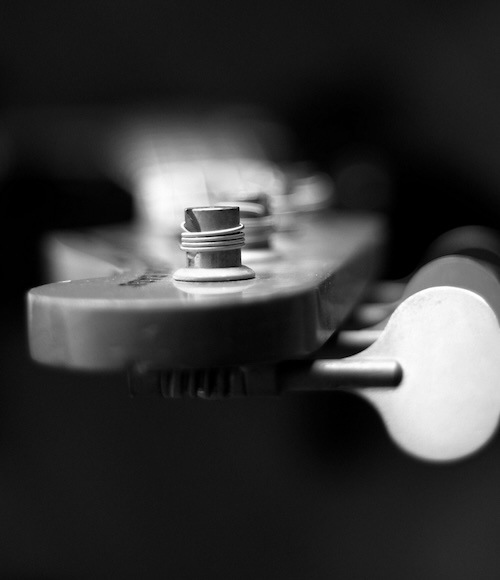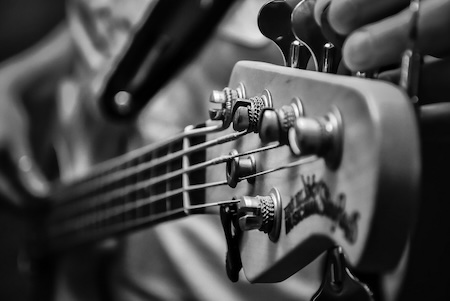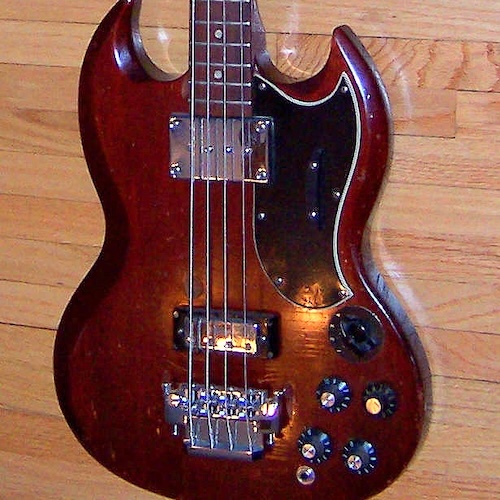When you perform live you experience thrill alongside hard work. Keeping your bass guitar perfectly tuned during the gig remains the most important factor for success. When your bass is properly tuned it integrates with the other band members to keep the performance energy alive. In this blog you will learn fast ways to tune your bass guitar during live shows so you can deliver a professional performance without interruptions.
Why Staying in Tune is Essential During a Gig
The audience experiences depend entirely on how well the sound system performs. An even tiny bass guitar tuning imbalance affects harmony and ruins your performance quality. Your bandmates and fellow musicians deserve your respect through proper tuning.
As the backbone of music production the bassline holds the rhythm and melody together. When your bass is out of tune it affects the performance of both the drummer and guitarist plus it can disturb the vocalist. Basslines take center stage in funk jazz and reggae music so staying in tune becomes crucial. By keeping your instrument properly aligned you maintain a strong and synchronized musical result.
Preparing Your Bass for the Stage
You need to prepare your bass tuning pegs before you play to make sure tuning runs trouble-free. You need to examine all aspects of your bass including strings and tuning pegs before beginning your performance.

Inspect Your Strings
Aged strings become less stable because they tend to lose their proper tuning position. Carefully check your strings for signs of damage before you perform. Check your electronic guitar parts and tuning pegs before taking action. Changing your strings to fresh ones enhances both their playing quality and stability during performances.
Secure Your Tuning Pegs
The bass tuning pegs help you preserve the right sound from your strings. When you play with better tuning pegs and exact gear ratios tuning becomes more effortless and more accurate. Check and tighten your bass pegs before the show to stop string movement.

Stretch Your Strings
Playing new strings for a short period of time normally results in them losing their tuned pitch. Use light force to extend each string when you set its pitch. This procedure creates better string stability and prevents unexpected string movement while you play.
The Right Tools Help You Tune Your Bass Quickly
Your ability to tune during performance becomes easier when you have the proper tools on hand. Here are some essentials every bassist should have:
Clip-On Tuners
You can attach a small precise clip-on tuner directly to your bass’s headstock. The device senses string vibrations directly to let you tune quietly anytime you need it.
Pedal Tuners
Professional bassists use pedal tuners as their standard tool. The devices easily connect to your pedalboard and work instantly when you tap them to block your sound while you tune. You can tune your instrument fast and inconspicuously with this system.
Spare Strings and Tools
Pack additional strings with a string winder plier and Allen wrench as part of your equipment kit. You need these items as they let you keep playing when your strings break or help you make fast setup changes.
Tuning During a Performance
No matter how well you prepare your bass there is still a risk it will go out of tune during a show. To keep a performance running smoothly you need to understand proper string adjustments.
Identify the Problem String
When you spot something is off tune start by finding the affected string. You can test the problem string either by playing it with your ear or by listening to its open pitch. Check your strings using your tuner when you are not sure which one needs adjustment.
Make Quick Adjustments
With the problem string known you can apply changes through your tuning peg. Twist the peg gently and check the tone while you do it. Keep an eye on your tuner display to check if your changes match the actual pitch.
Use Natural Breaks in the Set
Take your break during silent parts of songs or at set endings when possible to tune your instrument. Small changes in musical performance prevent distractions for the audience.
Bracing up to Environmental Problems
Your bass’s tuning can vary under unexpected live performance conditions. Your instrument faces temperature and humidity changes when you perform outdoors. Powerful stage lights inside performance spaces can silently change your bass instrument.
Acclimate Your Bass
Let your bass adjust to the show location before you begin. Check your bass during soundcheck using light notes to detect if it stays in tune.
Locking Tuning Pegs
Bassists who tackle tough playing situations should consider locking tuning pegs because they give their strings better protection. The locking tuning pegs hold your strings tightly so you don’t lose them while performing at high intensity.
Staying Calm Under Pressure
Dealing with bass tuning problems during a live performance creates high anxiety when you must perform in the middle of your song. Remaining composed helps you solve tuning problems better. Tuning problems only become noticeable to audience members when they are very obvious or excessive.
Look at what’s happening and fix the problem by breathing deeply. When tuning problems happen during a fast-tempo segment maintain your strong performance until you can handle the issue at break time.
Learning to Adjust Bass Strings Quickly
You need to train yourself to change your tuning during performance. Practice while you rehearse and practice changing the tuning of your bass while you perform a song. Over time you will develop better skills and self-assurance.
Learn how much you need to turn your bass tuning pegs to reach different notes. You will make better and faster tuning adjustments with your knowledge.
Take Care of Your Bass Between Performances
You need to take care of your equipment between performances as much as you prepare for them. Keep your strings and fretboard clean because dirt and oils damage tuning stability. If your tuning pegs show signs of damage you should replace them.
Keep your bass in a controlled setting with regular temperature and humidity levels. The wood can change shape when exposed to severe conditions which makes the instrument more difficult to stay in tune.
Conclusion
Every bassist must learn to adjust bass tuning quickly as part of their essential performance skills. Having your gear ready plus reliable tools and a relaxed state will help you deal with tuning problems effortlessly.
Having your bass in tune brings a smooth performance that makes you feel more confident playing as a musician. As you train and stay positive you will become skilled at solving tuning issues while giving every audience member an amazing experience. When you can quickly adjust the bass tuning at any performance location you prove yourself as a bassist who knows their instrument.

